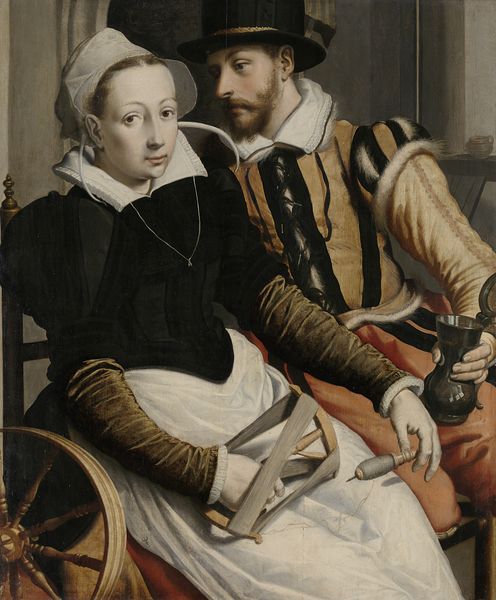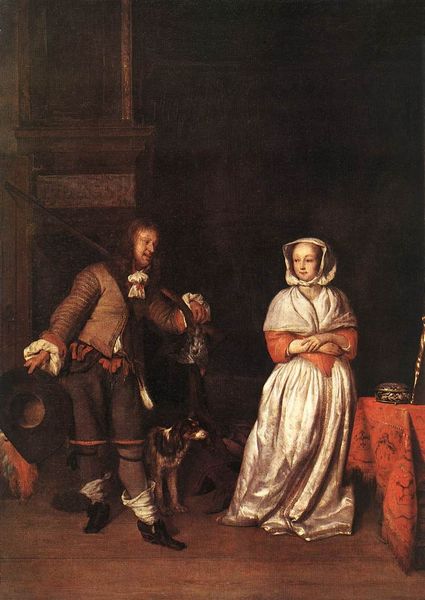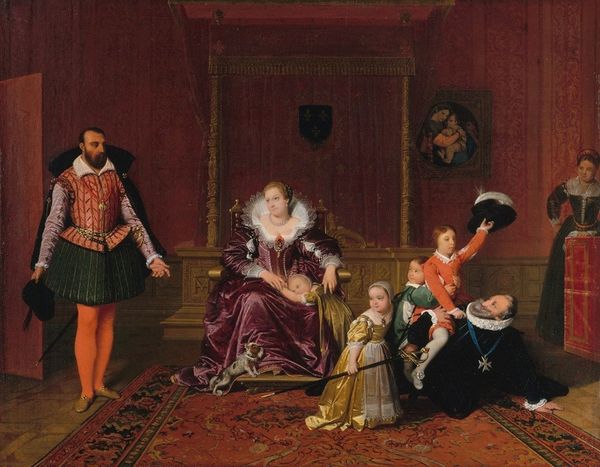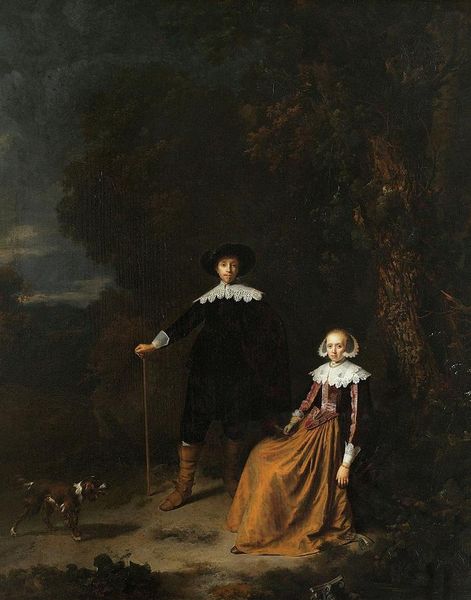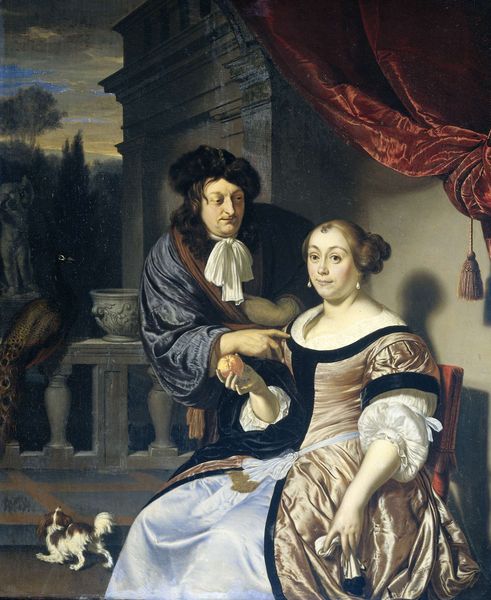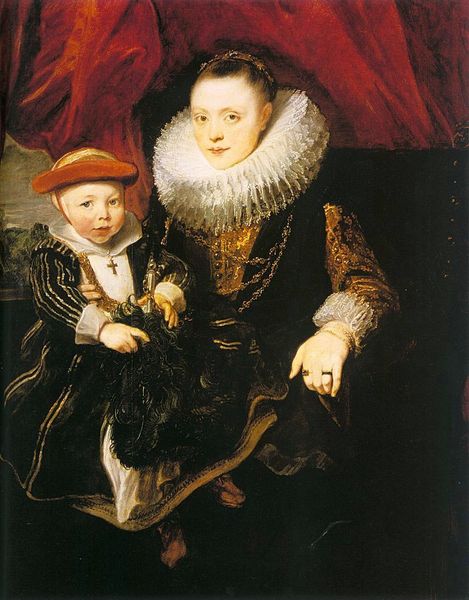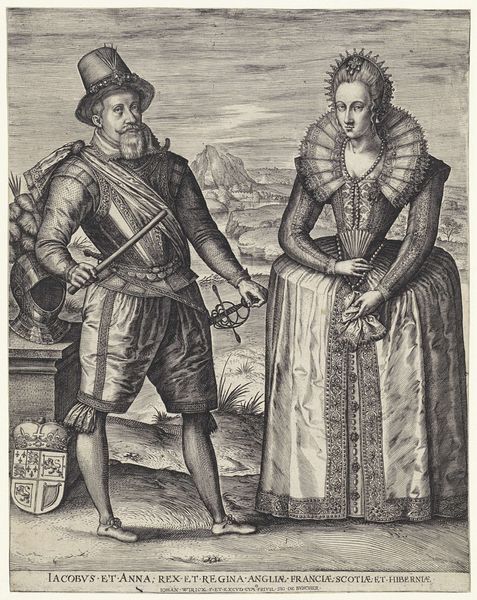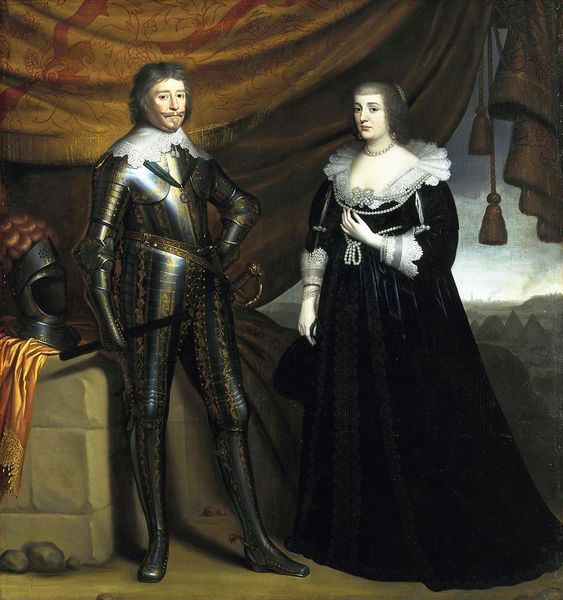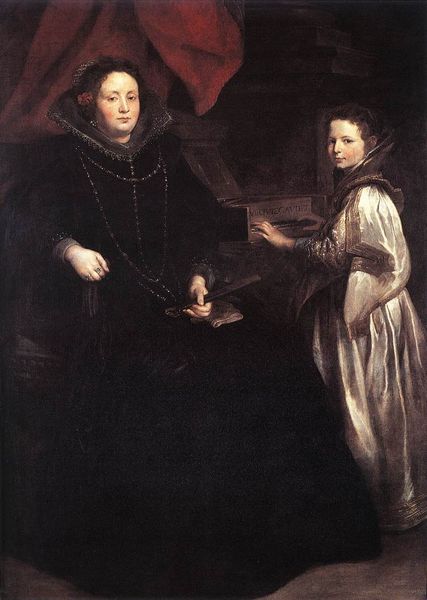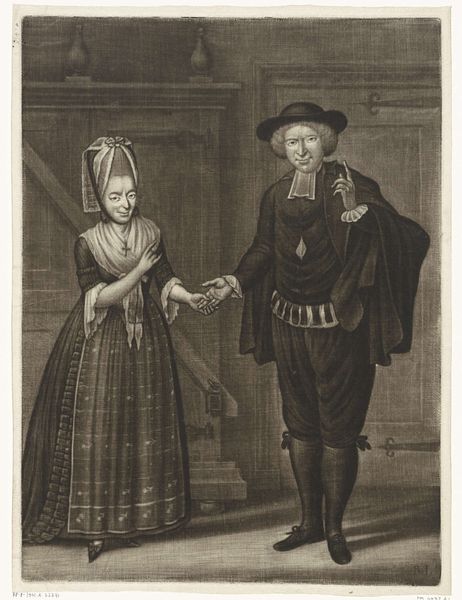
painting, oil-paint
#
portrait
#
baroque
#
painting
#
oil-paint
#
figuration
#
oil painting
#
group-portraits
#
genre-painting
#
portrait art
Copyright: Public domain
Curator: Looking at this painting, I’m immediately struck by the opulent textures, especially the gleam on the satins and velvets. The intimacy seems almost at odds with the formality of their attire. Editor: That's an astute observation. What you’re describing is “Self Portrait with His First Wife Isabella Brant in the Honeysuckle Bower,” painted by Peter Paul Rubens. Curator: The honeysuckle, then, becomes a significant detail? Editor: Precisely. The honeysuckle, or its variants in different languages, represents love and the sweetness of life together. It acts as a symbolic canopy sheltering the couple, subtly emphasizing themes of love and fidelity within marriage. Curator: But there's also a distinct power dynamic at play, isn’t there? His upright posture, her seated position... it hints at societal norms of the era. The setting too feels deliberate, placing them in a cultivated garden instead of a natural landscape. Editor: The power dynamic of course needs to be accounted for in a historical frame. He painted this circa 1609, just after returning to Antwerp from Italy, so this work marked not only his marriage, but also his professional homecoming, in a way. It announces his arrival as a successful artist in a society with very clear structures. His hand position, resting casually near his sword, sends subtle but unmistakable message. Curator: Yes, there's a feeling that even the surrounding nature has been ordered and structured according to his will, so to speak. Do you feel this is merely celebratory or could it be subtly provocative? Editor: Rubens frequently portrayed complex characters operating in highly charged atmospheres. To the aristocratic patrons of the era, his skill lay not in merely capturing the moment, but also representing it through potent and widely understood visual metaphors. The picture served as both a proclamation of marital harmony and a signifier of affluence, intellectual prowess, and artistic skill. Curator: Considering all that, what resonates most is not the literal likeness, but the depth of shared history and affection imbued through symbols within this context. Editor: I agree. Its continued significance lies in how it captured something truly personal while still remaining embedded in the language of its time.
Comments
No comments
Be the first to comment and join the conversation on the ultimate creative platform.
